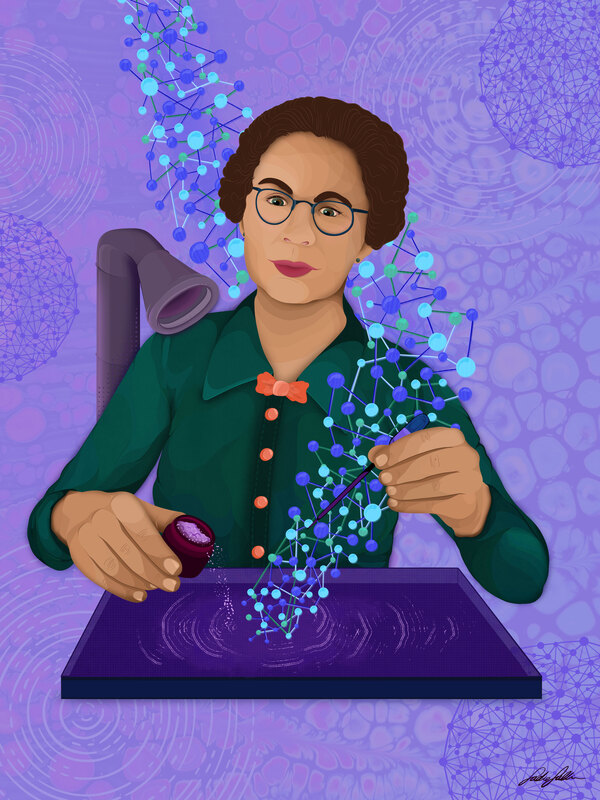|
Katherine Burr Blodgett (1898-1979)
Schenectady, New York, USA Digital Illustration, 24" x 32", 2022 In 1939, the cinematic film production Gone with the Wind opened in the United States. It was recognized for its crystal-clear cinematography. A particular “invisible,” nonreflective glass was used. This was invented by physicist and chemist, Katherine Burr Blodgett.
As the first woman to be awarded a Ph.D. in physics from the University of Cambridge in 1926, Blodgett was offered her dream job at General Electric (GE). She was the company’s first female scientist. As a research scientist at GE, she and her colleague Irving Langmuir created single-molecule thin films on the surface of water. On her own, Blodgett found a way to cover the glass with 44 barium stearate films, making it 99% transmissive and thus “invisible.” When light reflected on the layers of film, it canceled out the reflections by the glass. Blodgett’s glass went on to be used for post-war movie cameras and projectors, submarine pericopes, and airplane spy cameras during World War II. She invented the color gauge, a glass ruler to measure molecular coatings on glass. In her career, Blodgett was issued eight U.S. patents, and she was the sole inventor on all but two. |
Proudly powered by Weebly
